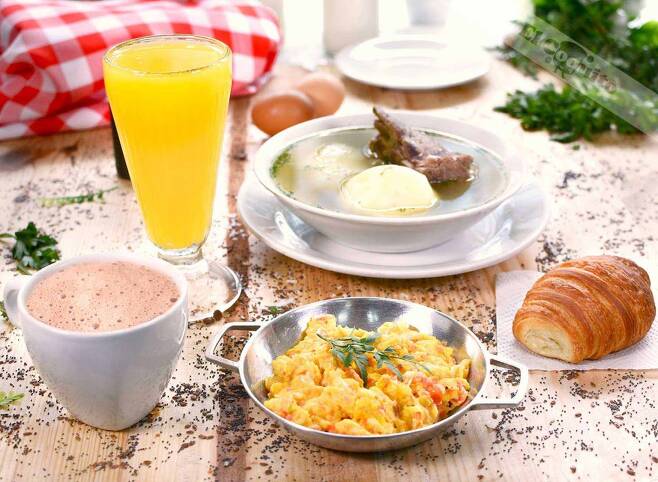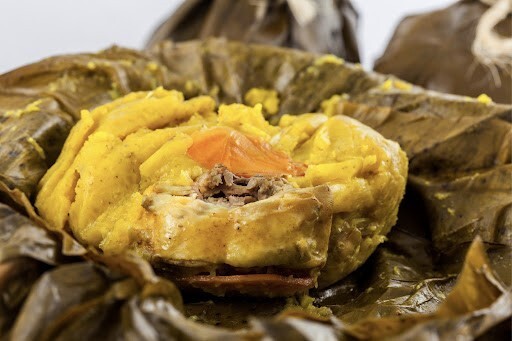'Eat breakfast like a king, lunch as prince, and dinner like a pauper'
이 글자크기로 변경됩니다.
(예시) 가장 빠른 뉴스가 있고 다양한 정보, 쌍방향 소통이 숨쉬는 다음뉴스를 만나보세요. 다음뉴스는 국내외 주요이슈와 실시간 속보, 문화생활 및 다양한 분야의 뉴스를 입체적으로 전달하고 있습니다.

Korean and Colombian cuisines have a lot in common, according to Alvaro Clavijo, a top Colombian chef on a tour of Korea. Both are concentrated on nutritional completion and components of all essential food groups on the plate, he told the Korea Herald.
Clavijo was in Korea for a brief visit, preparing exclusive meals and hosting a class at Kyonggi University. The following is taken from an interview with The Korea Herald:
Korea Herald: Please tell us about Colombian food. What is a typical Colombian breakfast, lunch, and dinner?
Alvaro Clavijo: Colombian gastronomy is characterized by its ingredients. The predominant ingredient in Colombian cuisine is potatoes, fruits and vegetables.

A Colombian breakfast is primarily of hot chocolate or coffee, orange juice, scrambled eggs, bread or arepa, and sometimes a beef broth or fruit. Breakfast is easily the largest and most complex meal of day with every breakfast restaurant in Colombia offering different menus and combinations of said components.
Eggs and beef broth can be replaced by tamal, an important dish in Colombian cuisine, there are different tamales throughout Colombia and are quite different from others.

Wrapped in plantain or banana leaves, tamales can be made of chicken or pork belly, pork ribs, carrots, peas, potatoes, chickpeas, boiled egg or rice.
A Colombian lunch is composed of soup, a protein like chicken or beef, potatoes or other forms of starch, and a large portion of rice; salad can also be added into the meal but isn’t essential. Many restaurants in Colombia offer soup as a first course before the main dish. Dinner can consist of the same protein as lunch, again accompanied by a considerable portion of rice, and some salad to make it a lighter, more balanced meal. It’s usually a smaller portion of everything as well. There is an old saying in Colombia, “Eat breakfast like a king, have lunch like a prince, and eat dinner like a pauper.”
KH: Which alcoholic drinks suit Colombian food the most?
AC: Colombia has many traditional alcoholic drinks that consist of fermenting traditional Colombian ingredients for long periods of time with milky, opaque consistencies once ready for consumption. Traditional Colombian fermented drinks are like makkeolli, the Korean rice wine.
Aside from traditional drinks, Colombian people also drink Aguardiente. Aguardientes are strong alcoholic beverages, obtained by fermentation and later distillation of sugared or sweet musts, vegetable macerations, or mixtures of the two.

Colombian aguardiente is anise-flavored and made specifically from sugar cane, which makes it a very pure aguardiente. It looks identical to soju.
KH: Please recommend some Colombian food products that are currently available in the Korean market.
AC: Colombian products can be tricky to find in Korean grocery stores, but Colombian ingredients are becoming more and more common to purchase online. At grocery stores, the most common Colombian ingredients are sweet Colombian bananas and Colombian avocados, both in higher demand in Korea and easily found.
However, it’s also not impossible to find other Colombian ingredients through apps like Coupang and such. Coupang seems to offer a varied array of ingredients like arepa flour, which is made of corn, and other Colombian food products that would be impossible to find at grocery stores.
KH: How are Korean and Colombian food similar?
AC: Rice is a major similarity. Rice is fundamental in both styles of cooking that provide plain-tasting and very filling food serving as base of the meal. Rice allows other seasoned ingredients to showcase flavors better.
Another similarity is balanced aspect of the meals. Both Colombian and Korean cuisine put a lot of emphasis on trying to make the dishes as nutritionally complete as possible, with components from all the essential food groups coming together on the plate.
Colombian and Korean cuisines are very different, however, in that we don’t really have very strong seasoning or even fermented ingredients. The ingredients we use are normally very fresh and seasoned with the intention to showcase their natural flavors without the need of much condiments or previous processes like fermentation.
Colombian food is not spicy at all, which makes it very different from many spice-rich dishes of Korean cuisine.
By Sanjay Kumar(sanjaykumar@heraldcorp.com)
Copyright © 코리아헤럴드. 무단전재 및 재배포 금지.